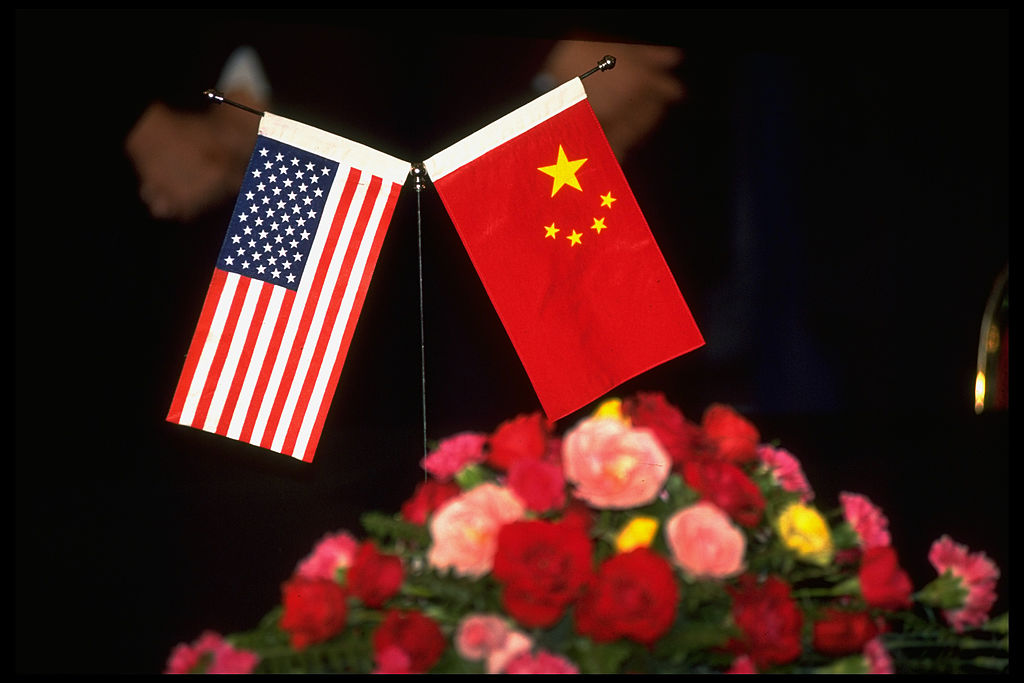 Print This Post
Print This Post- The Strategist - https://www.aspistrategist.org.au -
ASPI’s decades: China and the United States
Posted By Graeme Dobell on December 13, 2021 @ 06:00

China has embarked on a comprehensive strategy to become a pre-eminent regional power, one that is able to shape the international system to its advantage and not merely respond to events as best it can. This is a long-term goal, rooted in pragmatism and reality. It recognises, for example, that the US is a hegemonic power with effectively unassailable global reach. But China appears to believe that within the Asia–Pacific region it can balance and constrain American actions and options. And where Chinese vital interests are threatened by the US—especially in relation to Taiwan—they will be defended.
We are enthralled with the prospect of doing more business with one of the world’s most dynamic economies, whose growth already underpins Australia’s prosperity. But we are suspicious of China’s authoritarian political system, and worried about their potential to turn economic power into military and strategic muscle.
Most of the projections of China’s ‘superpower’ or Great Power potential consist of hyperbolic optimism or alarmist pessimism. They are based on assumptions that have no precedent in Chinese history and use modern analogies like the rise of Germany and Japan in the 20th century. These fail to underscore the disastrous endings to both those adventures and assume that the Chinese are stupid and will not learn from history about the dangers of nationalist and militarist power.
The Australian–US security partnership has already been partly reinvented, given that Australia sits comparatively far forward in the saddle in the War on Terror. The pressures for reinvention don’t arise solely from the Bush Administration, or from the supposed influence of the neo-cons within it. They arise from a deeper and more fundamental shift in the nature of the security environment, and are likely to grow rather than shrink in the years ahead.
China has become so integrated with the global economy that she can no longer pursue a high-risk foreign policy without jeopardising her economic prosperity. China is likely to become a threat to other countries only if she experiences domestic political instability which produces an upsurge of nationalism or a search for external scapegoats to blame for local problems. The Communist regime appears to be firmly entrenched and is unlikely to lose power any time in the near future.
Chinese foreign policy seeks to maximise stability at home, sustain China’s impressive economic growth, and maintain peace in China’s complicated geographic situation. More problematically, it also seeks to blunt US influence in East Asia and ‘regain’ territories that in many cases are disputed by others. Some uncertainty exists as to whether Beijing seeks to redress grievances of the past or attain a new pre-eminence.
What China and the US do—alone, together, or in conflict—will increasingly define the global bounds of the possible for fixing finance, reviving trade, resisting protectionism and tackling climate change, and for geopolitical stability in the Asia–Pacific region and beyond. For more than a decade, China and the US have successfully managed down their geopolitical frictions by focusing on win–win economic outcomes. What has been quite simply the most imbalanced economic relationship in recent human history has had the positive result of keeping a lid on Sino-American tensions.
At ASPI we noted this increased assertiveness in our dialogues with Chinese counterparts which included a new narrative built around the ‘20 years of strategic opportunity’ first foreshadowed by Deng Xiaoping. The combination of China’s confidence in successfully weathering the worst of the Global Financial Crisis, the apparent debilitation in Western economies, and the strategic distraction of the United States beyond East Asia, seemed to add an edge to the opportunities available to China during the coming decade or two. This included the Taiwan Strait and a sense that the balance of military capabilities in that area was swinging in China’s favour and limiting US options.
Article printed from The Strategist: https://www.aspistrategist.org.au
URL to article: https://www.aspistrategist.org.au/aspis-decades-china-and-the-united-states/
[1] global business: https://www.economist.com/leaders/2021/06/05/the-new-geopolitics-of-global-business
[2] 2000 defence white paper: https://defence.gov.au/publications/wpaper2000.PDF
[3] 2009 white paper: https://www.defence.gov.au/sites/default/files/2021-08/defence_white_paper_2009.pdf
[4] 2013 white paper: https://www.defence.gov.au/sites/default/files/2021-08/WP_2013_web.pdf
[5] 2016 defence white paper: https://www.defence.gov.au/whitepaper/
[6] 2017 foreign policy white paper: https://www.dfat.gov.au/sites/default/files/2017-foreign-policy-white-paper.pdf
[7] 2020 defence strategic update: https://www.defence.gov.au/sites/default/files/2020-11/2020_Defence_Strategic_Update.pdf
[8] Power shift: challenges for Australia in northeast Asia: https://s3-ap-southeast-2.amazonaws.com/ad-aspi/import/powershift.pdf?F7uVYAVBEYEqsdHGeYc9Zx4Xqui6WdEb
[9] optimism and fear: https://s3-ap-southeast-2.amazonaws.com/ad-aspi/import/SI_China1.pdf?VersionId=cbeiPHX66wagvQZuQPUFqPkQzrT7IGiz
[10] ‘tidal wave of common sense’: https://www.aspi.org.au/report/global-forces-2005-proceedings-aspi-conference
[11] aberration for China: https://s3-ap-southeast-2.amazonaws.com/ad-aspi/import/ASPI_GLOBAL_FORCES_07.pdf?PvdLS55TWQcddQb.QI4dwjnuIEzzTlhZ
[12] ‘biggest dilemma’: https://s3-ap-southeast-2.amazonaws.com/ad-aspi/import/10_45_58_AM_29794-ASPI-Insights-35-final.pdf?VersionId=4bVK_4iqDQTL1ueAA4cyRhME3x6hFJFj
[13] Australia and the US in a new strategic age: https://s3-ap-southeast-2.amazonaws.com/ad-aspi/import/Aust_US.pdf?VersionId=CcsuOkJ6KgNhgx7mdL5vs33j4G95T9PB
[14] the first major test: https://s3-ap-southeast-2.amazonaws.com/ad-aspi/import/ASPI_Balance.pdf?VersionId=RQqMx4eqsxa8_dygx1T70cy9LQ8HV4YM
[15] China raised questions: https://s3-ap-southeast-2.amazonaws.com/ad-aspi/import/ASPI_riding_wave.pdf?VersionId=1J5xUwtirpzOzVLKT95IV5FGrLfrNHIU
[16] global financial crisis: https://s3-ap-southeast-2.amazonaws.com/ad-aspi/import/After_GFC.pdf?VersionId=FxhbahsfZJ7GhTRmfkzXKR95C.lecGmp
[17] maritime strategy: https://s3-ap-southeast-2.amazonaws.com/ad-aspi/import/Policy_Analysis60_China_maritime_agenda.pdf?VersionId=Epe0ScWgsyA1AT3bOjcJTJzk5l8XJwyF
[18] most notable strategic development: https://s3-ap-southeast-2.amazonaws.com/ad-aspi/import/GlobalForces_Proceedings2011_low_res.pdf?biNG4.UdEVR5dARr8OblrMFrwZiZR.5S
[19] An informed and independent voice: ASPI, 2001–2021: https://www.aspi.org.au/report/informed-and-independent-voice-aspi-2001-2021